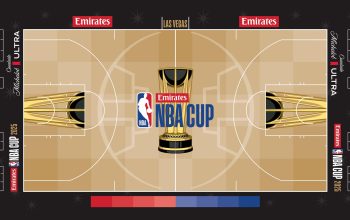If you’ve ever watched more than 10 seconds of basketball for the past 2-3 decades, then you recognize the iconic Jumpan logo. The silhouette of Michael Jordan flying through the sky for a slam dunk has nearly become synonymous with basketball itself. So, naturally, a lawsuit over who actually came up with the idea behind the logo has to crop up eventually because this is what we do here in America.
Here are the meaty details from ESPN’s report on the lawsuit:
[Photographer] Jacobus Rentmeester is suing Nike in federal court in Oregon for copyright infringement. Not only is he asking for profits associated with the Jordan brand, which generated $3.2 billion in retail sales in 2014, but he also is seeking to halt current sales and plans for the brand’s future.
Rentmeester said that in March 1985 — after threatening to sue the shoe and apparel brand — he granted Nike use of the Jordan logo for two years on billboards and posters in North America, for which he was paid $15,000. The Jumpman image also was featured as a tag on the Air Jordan I shoes, which sold for $65 a pair.
For his part, Rentmeester hasn’t addressed the alleged infringement expeditiously, given that it’s almost 28 years after that two-year contract would have expired.
In the suit, Rentmeester claims it was he, not Life Magazine, who remained the owner of the picture, but he noted that the photo was registered with the U.S. Patent and Trademark Office for the first time just last month.
ESPN also pulled this image from the court case’s documents, which is a comparison of Rentmeester’s photo (or at least a silhouette of it, which is on the left) and the current Jumpman logo which is on the right.
I’m not a lawyer, nor do I play one on TV. However, I think it’d be safe to say that Mr. Rentmeester probably isn’t going to get all of the billions that he is asking for in this lawsuit. However, one thing that also happens here in America is something called “settling out of court,” which means that the photographer is probably still going to get something substantial from this case.
But what do you guys think? Does Rentmeester have a legit case here?













